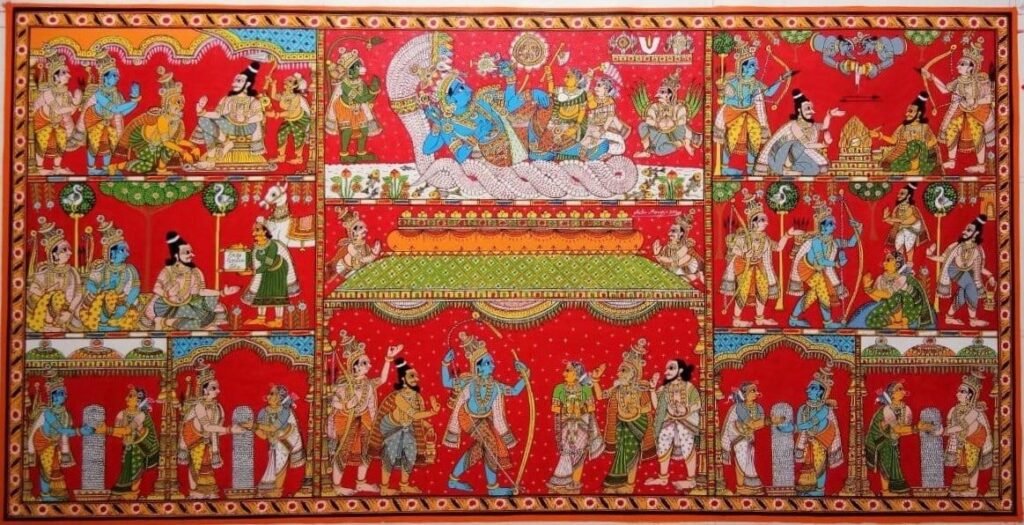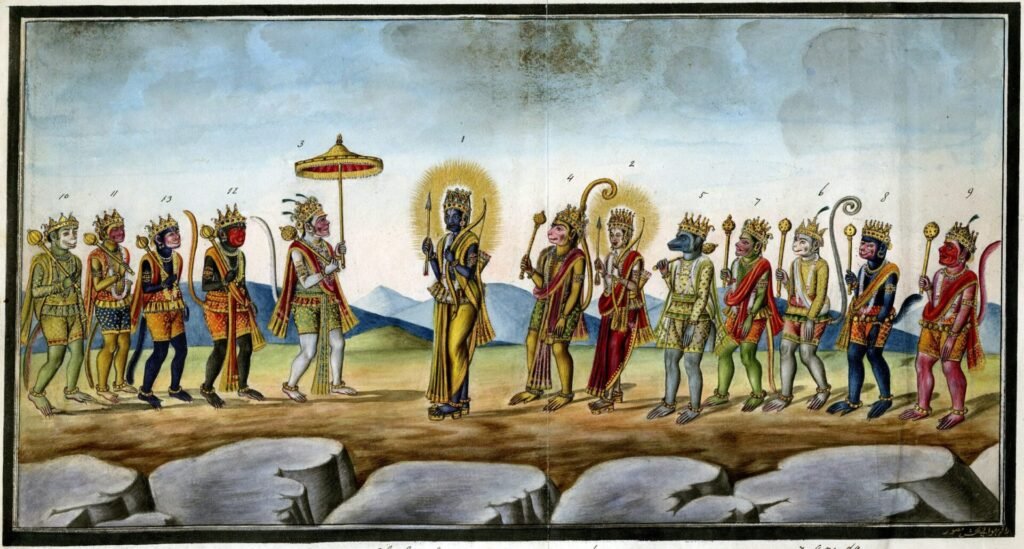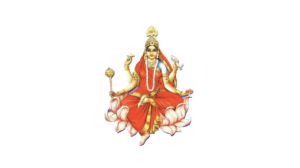
Ramayana: Rama’s Journey
The Ramayana is one of the most revered and enduring epics in the world, narrating the life and adventures of Prince Rama, his wife Sita, and his loyal brother Lakshmana. Composed by the sage Valmiki, the Ramayana is not only a literary masterpiece but also a spiritual and philosophical text that has deeply influenced Indian culture, religion, and society for over two millennia.

With its rich depiction of characters, moral dilemmas, and divine interventions, this epic continues to be a source of inspiration and spiritual guidance for millions of Hindus. Its influence, however, extends far beyond India, having left a profound impact across Asia where it has been adapted into various cultural forms, including literature, theater, dance, and art.
This article provides a comprehensive exploration of the Ramayana, covering its historical and literary background, key events, characters, themes, and its lasting cultural significance.
Historical and Literary Background
The Ramayana is traditionally attributed to the sage Valmiki and is believed to have been composed between the 7th and 4th centuries BCE. The epic, written in classical Sanskrit, consists of approximately 24,000 verses organized into seven books or Kandas. These Kandas cover different stages of Rama’s life, from his birth to his triumphant return to Ayodhya after years of exile.
Though Valmiki’s version is the oldest and most well-known, the story of Rama has been retold in various forms across India and Southeast Asia. Notable regional adaptations include:
- Tulsidas’s Ramcharitmanas in Awadhi
- Kamban’s Ramavataram in Tamil
- The Adhyatma Ramayana in Malayalam
Each version reflects the cultural and religious traditions of its region, bringing unique nuances to the story.
The Ramayana is not just a literary text but also a sacred scripture in Hinduism, representing the ideals of Dharma (righteousness), Bhakti (devotion), and the triumph of good over evil. The characters of Rama, Sita, and Hanuman are revered as divine embodiments of virtue and are worshipped in temples across India and beyond.
Key Events of the Ramayana
1. Rama’s Birth and Early Life
The Ramayana begins with the birth of Rama, the eldest son of King Dasharatha of Ayodhya and Queen Kausalya. Rama is considered the seventh incarnation of the god Vishnu, born to defeat the demon king Ravana and restore Dharma to the world. Rama’s brothers—Bharata, Lakshmana, and Shatrughna—are also born to Dasharatha’s other queens, Kaikeyi and Sumitra.
As a young prince, Rama excels in the arts of warfare, governance, and spirituality. His wisdom and adherence to Dharma make him Dasharatha’s favored heir to the throne.
2. Marriage to Sita
One of the most celebrated events in the Ramayana is Rama’s marriage to Sita, the daughter of King Janaka of Mithila. Sita chooses her husband in a Swayamvara ceremony, where princes from across the land attempt to string the mighty bow of Shiva, a divine weapon. Rama, demonstrating his divine strength, not only strings the bow but also breaks it, winning Sita’s hand. Their union is seen as an ideal relationship, symbolizing love, virtue, and commitment.

3. Exile of Rama, Sita, and Lakshmana
Rama’s path to the throne is obstructed by palace intrigue. Kaikeyi, manipulated by her maid Manthara, demands that Dasharatha fulfill an old promise to make her son Bharata king, and to send Rama into exile for 14 years. Bound by his word, Dasharatha agrees, though it breaks his heart.
Rama, ever dutiful and obedient, accepts his exile without complaint. Sita and Lakshmana insist on accompanying him. Together, the trio leaves Ayodhya and begins a life in the forest, where they encounter sages, demons, and various challenges that test their virtue and resolve.

4. Life in the Forest and Encounters with Demons
During their exile, the trio travels through the Dandaka and Panchavati forests, where they meet various sages and perform righteous acts. However, they also face challenges from demons, including the Rakshasa princess Surpanakha, Ravana’s sister.
Surpanakha, attracted to Rama, is rejected by both him and Lakshmana. In anger, she attacks Sita, but Lakshmana defends her and cuts off Surpanakha’s nose. This event sets off a chain of events that leads to Ravana’s revenge.
5. Sita’s Abduction by Ravana
Enraged by his sister’s humiliation, Ravana devises a cunning plan to abduct Sita. He sends the demon Maricha in the form of a golden deer to lure Rama away. Despite Lakshmana’s warnings, Sita urges Rama to capture the deer for her. While Rama is away, Ravana disguises himself as a mendicant and kidnaps Sita, taking her to his kingdom in Lanka.

This abduction becomes the central conflict of the epic, as Rama and Lakshmana embark on a quest to rescue her.
6. Alliance with Hanuman and the Vanaras
During their search for Sita, Rama and Lakshmana form an alliance with the Vanaras, a race of monkeys led by their king Sugriva and his general, Hanuman. Hanuman, known for his extraordinary strength and devotion to Rama, locates Sita in Lanka.
Hanuman’s journey to Lanka, where he finds Sita imprisoned in the Ashoka grove, is one of the most iconic moments in the epic. He reassures Sita of Rama’s love and prepares for the eventual battle against Ravana.
7. The Battle in Lanka and Ravana’s Defeat
Rama, with the help of the Vanaras, builds a bridge (Rama Setu) to cross the ocean and reach Lanka. A great battle ensues between Rama’s army and Ravana’s forces. Ravana, a formidable warrior, fights fiercely but is ultimately defeated by Rama.
The climax of the battle comes when Rama shoots a Brahmastra (a divine weapon) at Ravana’s naval, the source of his immortality, and kills him. With Ravana’s death, Sita is rescued, and the forces of good prevail over evil.

8. Sita’s Trial by Fire
Before returning to Ayodhya, Sita undergoes a trial by fire (Agni Pariksha) to prove her purity, as some question her virtue after spending time in Ravana’s captivity. Sita emerges unscathed, reaffirming her loyalty and righteousness.

9. Rama’s Return and Coronation
Rama, Sita, and Lakshmana return to Ayodhya after completing their exile. Rama is crowned king in a grand ceremony (Pattabhisheka), marking the restoration of order and justice. This moment, often associated with the festival of Diwali, symbolizes the victory of light over darkness.

Rama’s reign, known as Rama Rajya, is depicted as an ideal form of governance characterized by peace, prosperity, and adherence to Dharma.
Key Characters in the Ramayana
- Rama: Known as Maryada Purushottama (the ideal man), Rama embodies righteousness, duty, and compassion. His unwavering commitment to Dharma, despite facing personal hardships, makes him a model for moral conduct.
- Sita: Sita is the epitome of purity, loyalty, and devotion. She is often regarded as the ideal wife, symbolizing the strength and resilience of women. Her suffering and steadfastness during her captivity in Lanka are central to her character.
- Lakshmana: The devoted brother, Lakshmana exemplifies loyalty and selflessness. He accompanies Rama into exile and stands by his side through all challenges, embodying the virtues of familial love and duty.
- Ravana: A complex character, Ravana is both the antagonist and a learned scholar. Though a devout Shiva worshipper and a capable ruler, his arrogance, desire for Sita, and disregard for Dharma lead to his downfall, serving as a cautionary tale about unchecked ambition.
- Hanuman: The monkey god Hanuman is revered for his unwavering devotion to Rama. His strength, humility, and selfless service make him one of the most beloved characters in the Ramayana, embodying devotion and courage.
Legacy and Cultural Significance
The Ramayana has profoundly influenced Indian culture, philosophy, and religious practices. The epic is more than just a story; it embodies the core values of Hindu thought—Dharma, the moral order of the universe, Bhakti, devotion to God, and the eternal struggle between good and evil.
Its influence spans across South and Southeast Asia, with countless adaptations in art, dance, theater, and literature. Festivals like Diwali, which celebrate Rama’s return to Ayodhya, are testament to its lasting cultural importance.

In conclusion, the Ramayana is a timeless epic that continues to inspire millions, offering lessons on duty, morality, and devotion that remain relevant in today’s world.








